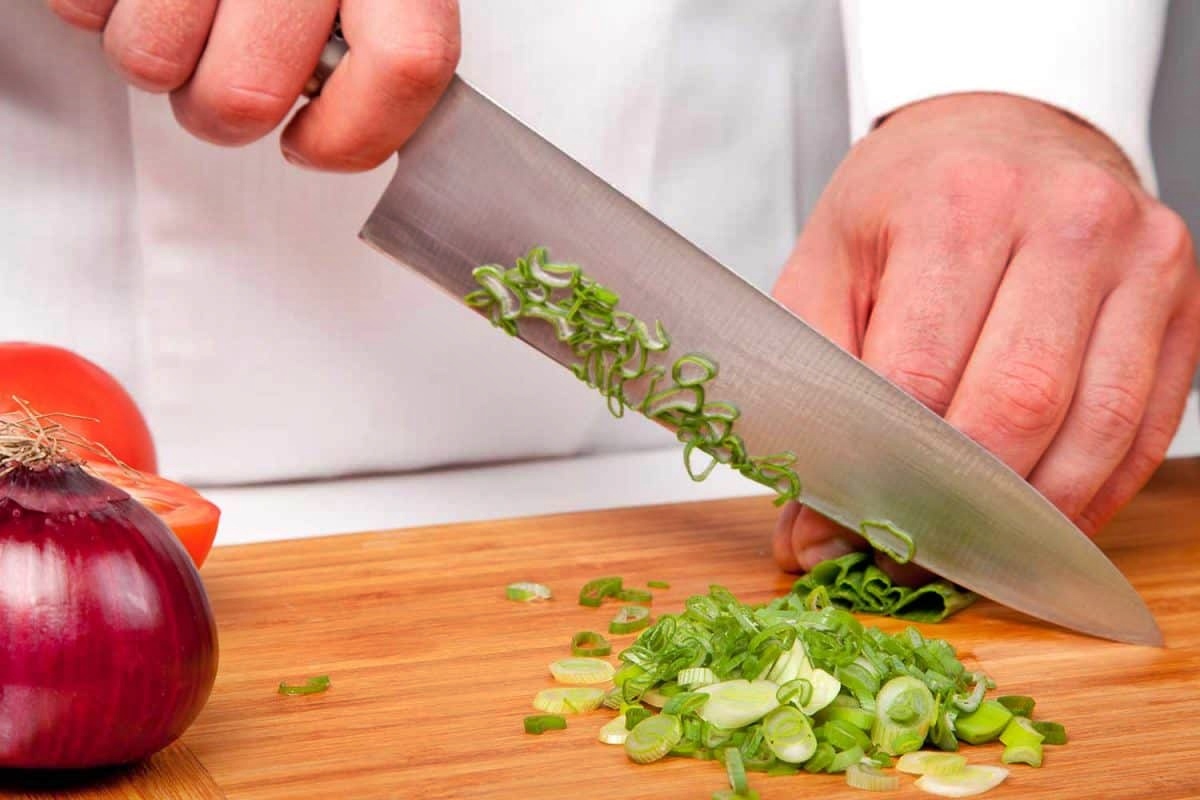How to Use a Chef Knife: Essential Techniques for BBQ Enthusiasts
Written By James Morgan
Mastering the **art of using a chef knife** is a critical skill for any barbecue enthusiast. Whether you're slicing brisket or chopping veggies for the grill, knowing how to use a chef knife efficiently will not only enhance your cooking experience but also ensure safety and precision in your culinary endeavors.

Why A Chef Knife is Essential for Barbecue
The **chef knife** is arguably the most versatile tool in your kitchen, perfectly designed for a variety of tasks which are integral to **barbecue preparation**. Its sharp edge and balanced weight make it ideal for slicing, dicing, and choppinga must-have for any serious grill master. But how exactly do you make the most out of this important tool?
Choosing the Right Chef Knife
Before diving into the techniques, its crucial to select the right **chef knife**. Factors such as blade material, handle comfort, and size should be considered. Generally, an 8 to 10-inch blade is ideal for most barbecue tasks. Make sure the handle feels comfortable in your hand, and the blade is made of high-quality stainless steel for durability and sharpness.

Basic Techniques for Using a Chef Knife
Grip the Knife Correctly
The first step in mastering your **chef knife skills** is learning how to grip the knife properly. Hold the handle with your dominant hand, wrapping your fingers around it while placing your thumb and forefinger on the blades sides for better control.
Master the Rocking Motion
The **rocking motion** is a fundamental technique that allows you to chop food consistently and safely. Start by placing the tip of the blade on the cutting board, using a gentle rocking motion to slice through the food. This method is especially useful when cutting herbs and vegetables.
Slicing and Dicing
Slicing and dicing are two basic yet essential techniques you'll frequently use. For slicing, use smooth, even strokes to cut through the food. Dicing involves cutting food into small, even pieces. Both techniques require practice but will significantly improve your barbecue preparations.

Safety Tips for Using a Chef Knife
Using a chef knife involves risks, especially if you're inexperienced. Here are some **safety tips** to ensure your knife skills are both efficient and safe:
- Always use a sharp knifedull blades are more likely to slip and cause injuries.
- Keep your non-dominant hand in a claw-like position to protect your fingers.
- Use a cutting board with a non-slip surface to prevent accidents.
Cutting Different Types of Meat
A significant part of barbecuing involves **cutting different types of meat**. Whether you're slicing through a brisket or trimming fat off a pork shoulder, using the correct technique is crucial. For instance, always cut against the grain to ensure tender slices of meat.
Vegetable and Herb Preparation
Vegetables and herbs are essential components of any barbecue. Learn to chop vegetables into uniform pieces for even cooking. When cutting herbs, use a gentle rocking motion to release their flavors without bruising them.

Advanced Techniques for BBQ Enthusiasts
Butterfly Cut
The **butterfly cut** technique is useful for preparing meats like chicken breasts. This method involves slicing the meat horizontally without cutting all the way through, then spreading it open like a book. This helps in even cooking and marinating.
Julienne and Chiffonade
For certain barbecue dishes, you may need to julienne or chiffonade your ingredients. **Julienne** involves cutting vegetables into thin, matchstick-like pieces, while **chiffonade** refers to slicing herbs or leafy greens into thin ribbons. Both techniques require a steady hand and precise control.
Knife Maintenance Tips
Maintaining your chef knife is crucial for its longevity and performance. Here are some **maintenance tips**:
- Always hand wash your knife with mild soap and water.
- Regularly sharpen your knife using a whetstone or honing rod.
- Store your knife in a knife block or magnetic strip to prevent damage.
Common Mistakes to Avoid
Avoid common mistakes such as using the wrong type of knife for specific tasks, applying too much force, or not maintaining your knife properly. These errors can result in poor performance and potential injuries.
Additional Resources for Knife Skills
For more tips and techniques, check out these helpful resources:
Cut Bread
Sharpen Knife
Cut Avocado
BBC Guide
FAQs
How often should I sharpen my chef knife?
It depends on how frequently you use it. Generally, you should sharpen your **chef knife** every few months but hone it regularly.
Can I use a chef knife for all barbecue tasks?
While a **chef knife** is versatile, it's not suitable for tasks that require a different type of blade, like slicing bread or cutting through bones.
Is a more expensive chef knife better?
Not necessarily. The best **chef knife** for you is one that feels comfortable and suits your needs. Expensive knives often offer better materials and craftsmanship, but they are not always a necessity.
As an Amazon Associate, I earn from qualifying purchases.



